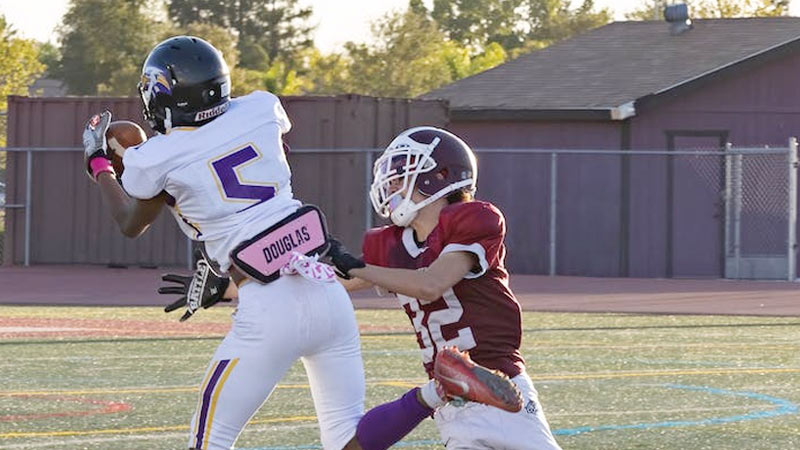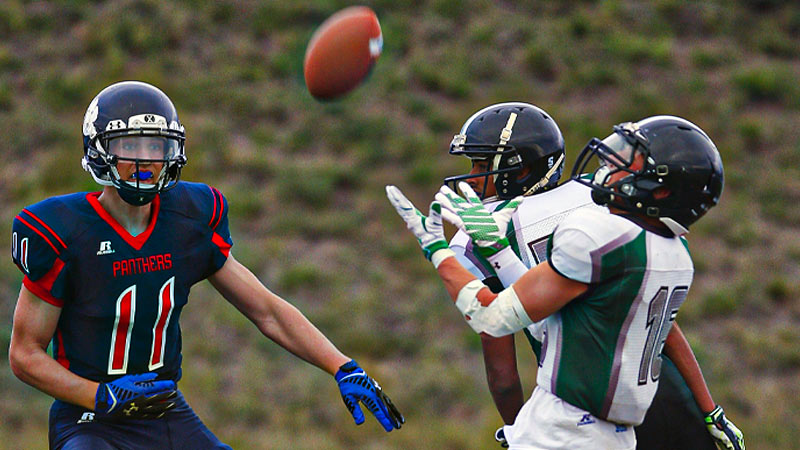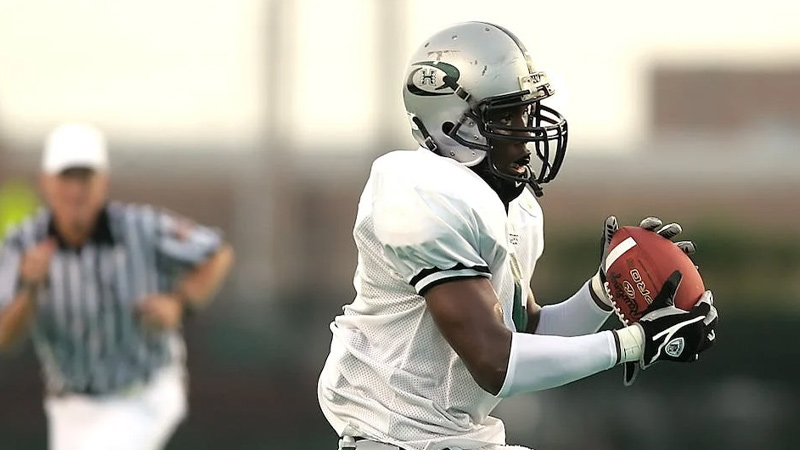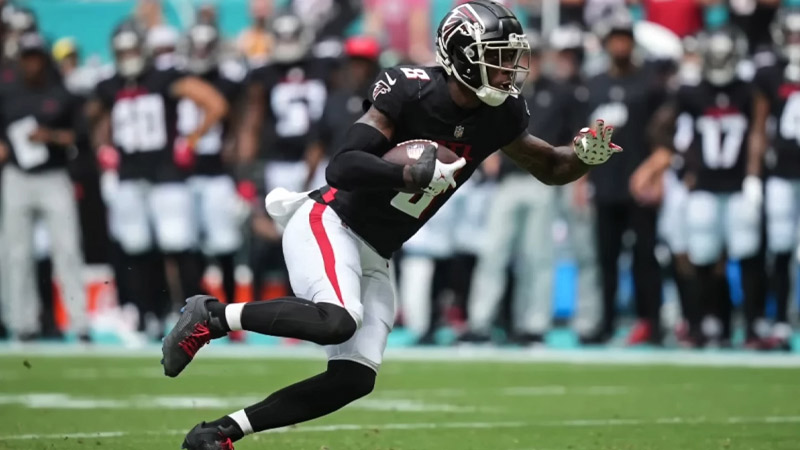In the dynamic world of American football, the concept of a “fair catch” stands as a pivotal rule designed to balance the game’s fierce competitiveness with player safety.
This fundamental rule empowers players during punt and kickoff returns to request a momentary ceasefire, signaling their intent to catch the ball without the risk of immediate contact. By raising one arm and waving it overhead, they invoke a shield of protection against oncoming defenders.
This temporary pause ensures a fair opportunity for both teams and has evolved into a vital aspect of the sport, fostering a safer environment while preserving the essence of fair play on the gridiron.
What Is a Fair Catch in American Football?
The Fair Catch Rule is a rule in American football and Canadian football that allows a player to make a fair catch signal in order to catch a punt or kickoff without being tackled.
The primary purpose of this rule is to protect the receiving player from being tackled immediately after catching the ball, thus reducing the risk of injury.
Here’s how the Fair Catch Rule works:
Player Signals Fair Catch
To initiate a fair catch, a player from the receiving team must raise one arm above their head and wave it from side to side while the ball is in the air. This signal is usually accompanied by the verbal announcement of a “fair catch.”
Protection for the Receiving Player
Once a fair catch signal is made, members of the kicking team must give the receiving player an opportunity to catch the ball without interference. They cannot tackle or block the receiving player until after the ball is caught and has been given a chance to be secured.
No Advance After Fair Catch
When a fair catch is successfully made, the receiving team gains possession of the ball at that spot, and the player who made the fair catch cannot attempt to run with the ball. The ball is spotted at the location of the fair catch.
No Fair Catch, Play Continues
If a player chooses not to make a fair catch signal and lets the ball bounce, the play continues as usual.
The receiving team has the option to return the kick, and the kicking team can try to down the ball as deep as possible in the opponent’s territory.
Penalties for Interference
If a player from the kicking team interferes with the opportunity for the receiving player to make a fair catch (e.g., tackling the player before they catch the ball), penalties can be assessed against the kicking team. This is typically a 15-yard penalty for kick-catch interference.
Fair Catch Rules in American Football

The fair catch rule in American football is designed to protect players during punt and kick returns.
When a player on the receiving team signals for a fair catch, they are essentially indicating to the officials and the opposing team that they do not intend to advance the ball after catching it.
The primary purpose of this rule is to prevent injuries by allowing the returner to catch the ball without the fear of being tackled immediately.
Here are the key rules and details regarding fair catches in American football:
Signal for a Fair Catch
To make a fair catch, a player must raise one arm fully extended above their head and wave it back and forth. This signals their intention to the officials, the opposing team, and their own teammates that they want to make a fair catch.
Catch and Down
Once a player successfully catches the ball after signaling for a fair catch, they are considered “down” at the spot of the catch. This means that they cannot advance the ball any further, and their team takes possession from that spot.
Protection from Interference
While the returner is in the process of making a fair catch, the opposing team must give them a reasonable amount of space to do so.
Interfering with the returner’s ability to make a fair catch, such as tackling them before they secure the ball, results in a penalty called “fair catch interference.” This penalty gives the receiving team better field position.
Muffing a Fair Catch
If a player attempts to make a fair catch but fails to securely catch the ball, resulting in the ball touching the ground, it is considered a “muff.” In this case, the ball is live, and either team can recover it. However, the returner cannot advance the ball if they muffed the catch.
One-Step Rule
In some situations, a player may catch the ball and take one step before being considered “down.” This rule allows for a slight bit of movement to avoid a fair catch in cases where the returner believes they can gain a few extra yards with a quick step forward.
No Fair Catch
Players are not obligated to make a fair catch even if they signal for one. They can change their mind and attempt to advance the ball if they believe it is advantageous to do so.
Fair Catch on Kickoffs
While fair catches are more commonly associated with punt returns, they can also be called on kickoffs, although this is rare. A returner can signal for a fair catch on a kickoff, and if they successfully catch the ball, their team will start their offensive possession from that spot.
NFL Fair Catch 20-Yard Line

Rules and regulations in the NFL can change from season to season, and new rules may have been implemented since then.
In general, the NFL rules regarding fair catches are as follows:
Fair Catch Signal
A player can make a fair catch signal by extending one arm fully above their head and waving it back and forth before attempting to catch a punt or kick. This signal indicates that the player does not intend to return the ball and wants to catch it safely.
Catch and Down
When a player successfully catches the ball after signaling for a fair catch, their team takes possession of the ball at that spot, and the player is considered “down” at that location. This is a safety measure to prevent the player from being tackled immediately after making the catch.
Protection from Interference
The opposing team is not allowed to interfere with the returner’s ability to make a fair catch. Fair catch interference is a penalty that results in the receiving team gaining better field position.
Muffed Fair Catch
If the returner attempts to make a fair catch but fails to securely catch the ball, it is considered a “muff.” In this case, the ball is live, and either team can recover it. However, the returner cannot advance the ball if they muffed the catch.
One-Step Rule
In some cases, a player may catch the ball and take one step before being considered “down.”This rule allows for a slight bit of movement to avoid a fair catch in situations where the returner believes they can gain a few extra yards with a quick step forward.
Kickoffs and Punts
Fair catches can be called on both punts and kickoffs, though they are more common on punts. On a kickoff, a returner can signal for a fair catch, and if they successfully catch the ball, their team will start their offensive possession from that spot.
NFL Fair Catch Old Rule

The fair catch rule in the NFL has evolved and undergone various changes throughout the league’s history.
Here are the old rules of the fair catch in the NFL:
Early Fair Catch Rule
In the early days of American football, the fair catch rule allowed a player to signal for a fair catch by raising one hand, and if the catch was successful, the team was awarded a free kick from that spot. This rule aimed to incentivize fair catches by providing an advantageous field position.
Elimination of Free Kicks
Over time, the rule was modified to eliminate the free kick and instead awarded the receiving team possession of the ball at the spot of the fair catch. This change reduced the risk associated with attempting fair catches.
Safety Measures
The fair catch rule has always been closely associated with player safety. It was designed to protect returners from being tackled immediately after catching the ball, reducing the risk of injuries.
Muff Rule
In addition to the fair catch, rules were established to govern situations where a returner attempted a fair catch but failed to securely catch the ball. This resulted in the ball becoming live, and neither team could recover it.
Fair Catch Interference
Rules also evolved to protect returners from interference by members of the kicking team. If a player from the kicking team interfered with the returner’s ability to make a fair catch (e.g., tackling them before they secured the ball), it resulted in a penalty called “fair catch interference,” giving the receiving team better field position.
One-Step Rule
In some cases, a player was allowed to take one step after catching the ball before being considered “down.” This rule aimed to provide returners with a slight opportunity to gain additional yardage while maintaining their safety.
Kickoff Fair Catch
Fair catches could also be called on kickoffs, allowing the receiving team to take possession of the ball without returning it.
FAQS
Can the Kicking Team Recover a Fair Catch?
No, once a fair catch is signaled and successfully made by the receiving team, the kicking team cannot recover the ball. The receiving team gains possession at that spot.
Is a Fair Catch Signal Reversible?
No, once a player signals for a fair catch, they cannot change their mind and attempt to return the ball. The play is dead, and the ball is spotted where the fair catch was made.
Can a Fair Catch Be Called in the End Zone?
Yes, a fair catch can be signaled and made in the end zone on a kickoff. In this case, it results in a touchback, and the receiving team gets the ball at their own 25-yard line.
Can a Fair Catch Be Called on a Field Goal Attempt?
No, a fair catch cannot be called on a field goal attempt. The fair catch rule applies mainly to punt and kickoff returns.
Is There a Time Limit for Making a Fair Catch Signal?
There is no specific time limit for making a fair catch signal, but it should be done before the ball arrives. A late signal can confuse the coverage team and may not be honored by officials if it causes confusion.
Wrap Up
In American football, the fair catch is not just a rule; it’s a pivotal aspect that underscores the game’s balance between competition and player safety. It’s a strategic decision, a split-second judgment made by returners to secure possession without immediate threat.
This rule, though seemingly straightforward, carries profound implications. It mitigates the risk of injury, fostering a safer environment for players, while also introducing layers of strategy and tactical nuance to the sport.
Fair catches can be a game-changer, altering field position dynamics and influencing game outcomes. In essence, the fair catch is a testament to the NFL’s commitment to both the excitement and the welfare of its athletes.







